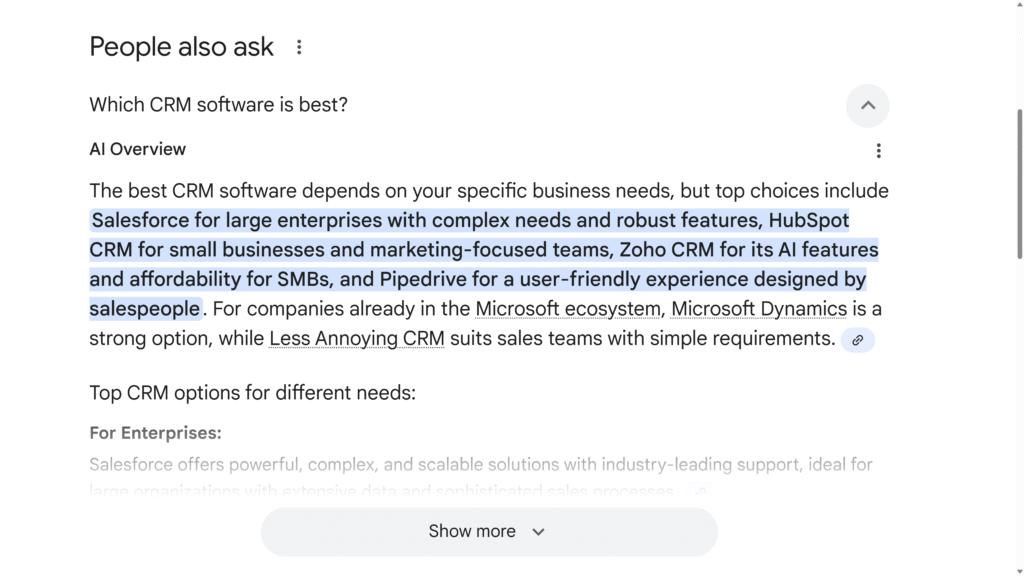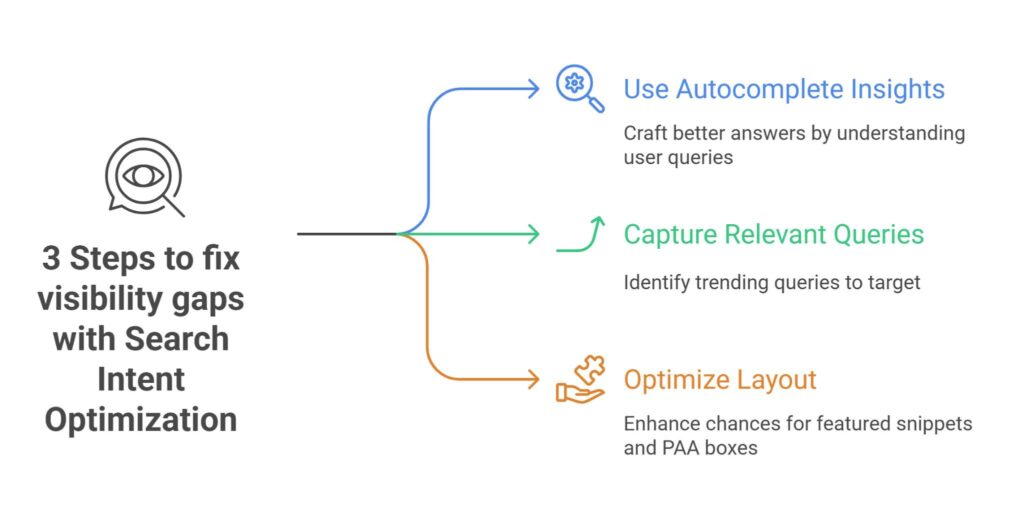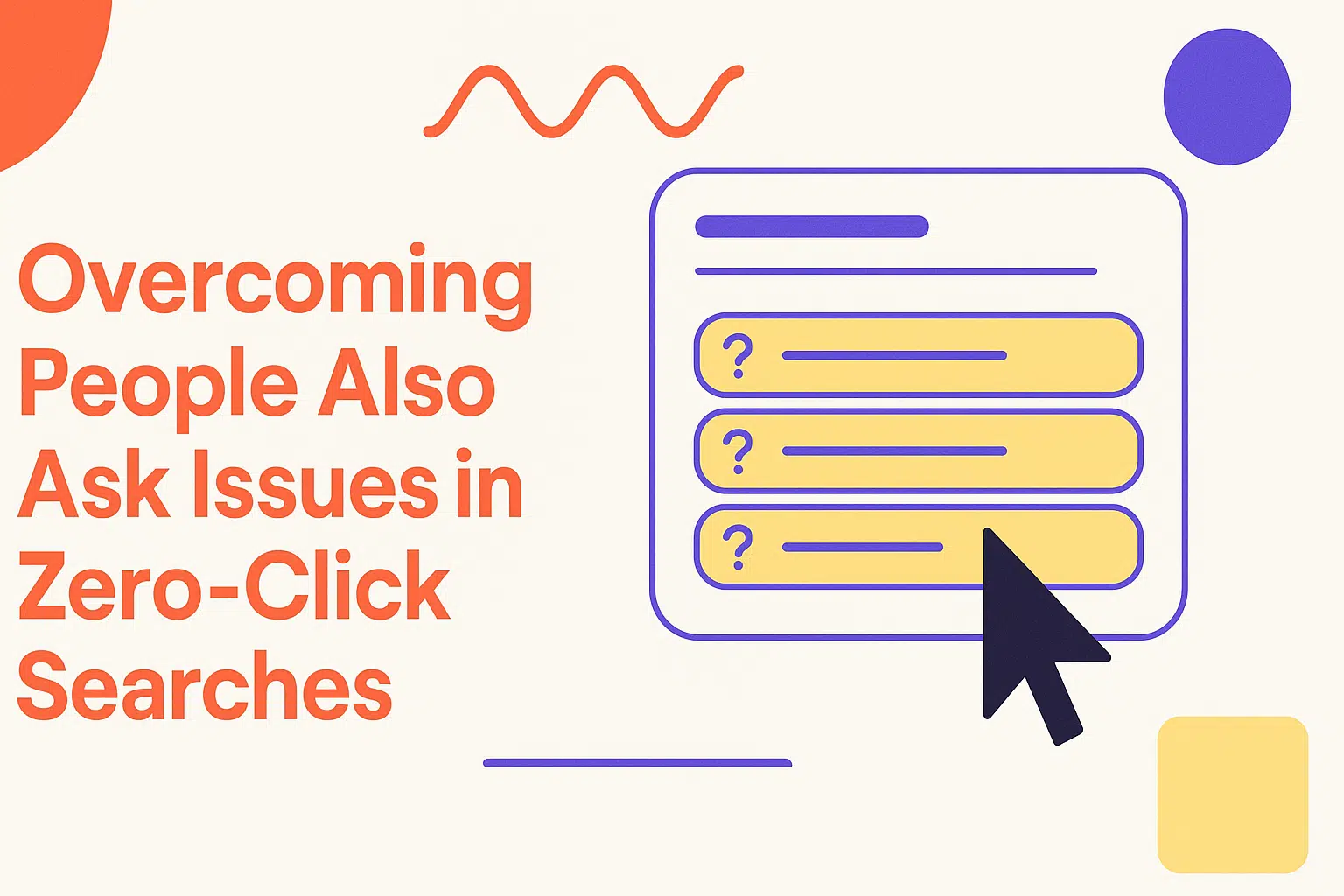In today’s fast-changing digital space, search queries change into more casual and direct expressions. Users now get answers via features like People Also Ask and zero-click results, which provide quick solutions without requiring a website click. This shift challenges marketers and content creators to adjust their strategies. By reworking content to match current search behavior, businesses can maintain their presence even when users bypass usual links. Embracing this landscape means a willingness to use new tactics that meet user intent while improving insights to tailor content for audiences in the United States, India, Canada, United Kingdom, and Australia.
Understand ‘People Also Ask’ and Zero-Click Behavior
What triggers ‘People Also Ask’ boxes on Google
Google fills People Also Ask boxes when it finds clear, question-based queries from users. The algorithm scans for frequently asked questions and pulls content that directly answers them. This process relies on structured content that indicates value and clarity. Content formatted in a Q&A style or lists often triggers these boxes. Marketers can observe emerging trends by studying specific question phrasing and related terms. Adjusting content structure to match simple, direct answers increases the likelihood of being featured and increases presence in competitive search landscapes greatly.
Why zero-click searches hurt content visibility
Zero-click searches deliver answers directly on the search results page, meaning users might get solutions without clicking on a website. This trend reduces click-through rates, forcing content creators to change their approach. Search engines prioritize concise, direct information often drawn from trusted sources. Outdated pages or those lacking structured markup fail to capture attention, leaving useful information confined to search snippets instead of creating traffic. Marketers must adjust by favoring content clarity and thoroughness to offset the shift towards zero-click experiences. Schema and updated data can improve featured response opportunities effectively.
“Zero-click searches can be beneficial because they compress the buyer journey. I’m no longer looking for information; I’m further down the funnel and now looking for potentially something to buy.”
Tim Cameron-Kitchen, Founder of Exposure Ninja
The link between SERP features and growing no-click searches
SERP features like featured snippets, knowledge panels, and People Also Ask boxes get user attention without requiring a click. Their prominence shows that search engines want to deliver direct answers from a variety of sources. This shift reduces traffic to usual listings as zero-click searches rise. Brands can change content strategies to combine engagement with direct site visits. A careful review of SERP trends helps to identify needed content updates and schema changes to stay competitive in an answer-first landscape. This data leads to smarter marketing and sharper digital strategies for success.
Pinpoint Issues Caused by ‘People Also Ask’ Boxes
How ‘People Also Ask’ affects organic traffic
People Also Ask boxes change organic traffic by shaping where users click. With search engines displaying answers outright, many users bypass usual site visits. This practice reduces organic click-through rates and forces websites to review their content strategies. Research shows that many PAA responses come from lower ranked sites, yet they provide useful insights about user queries. Implementing structured data and richer content can help use these opportunities to maintain traffic. Businesses must understand user behavior linked to PAA queries to successfully improve their presence in rival search landscapes today.

Why misleading PAA answers cause bounce rates
Misleading answers in People Also Ask boxes can cause rising bounce rates by setting false expectations. When users click expecting more detailed information, they may find content lacking the promised clarity or depth, prompting quick exits. The mismatch between the snippet and full content confounds user intent. Poorly structured responses often lead to higher bounce rates and hurt brand credibility. Reviewing and matching content with the true query intent becomes essential. Improving answer accuracy and providing consistent, succinct information can reduce bounce rates and encourage longer engagement on websites.
Common content flaws that keep you out of PAA results
Shortcomings such as not organized formats and vague answers may prevent inclusion in People Also Ask boxes. Poorly formatted text, along with the lack of clear Q&A sections, hinders search engines from identifying relevant responses. Overuse of jargon and missing schema markup further reduces the chance of selection. Inconsistent updates and shallow responses also play a role. Addressing these flaws by adopting structured formats, clear language, and regular content revisions can improve the likelihood of success. Research shows that aligning content with specific question patterns increases presence and increases user engagement regularly.
Fix Visibility Gaps with Search Intent Optimization

Craft better answers using Google Autocomplete insights
Google Autocomplete is a tool that offers key insights to craft better answers. By studying real-time suggestions, content creators can find long-tail queries and common questions users pose. These insights let writers include precise keywords and natural language that match casual queries. This approach not only improves answer clarity but also matches content with actual search behavior. Marketers can test variations in phrasing to find optimal responses that attract inclusion in People Also Ask boxes. Consistent use of autocomplete data helps to improve and enhance content strategy for improved search performance.
Capture relevant queries using Google Search Trends
Google Search Trends reveal queries that match current user interests. By reviewing trend data, content teams can identify rising questions and popular topics. This research points focus toward subjects that create higher engagement. Using these trends helps improving existing pages while informing future content planning. Analyzing shifts and regional differences further fits the strategy, ensuring content meets both local and global search demands. Tracking search trends allows marketers to adjust tone, detail, and focus to match changing user intent. Integrating trend insights fosters content that gets timely attention.
Optimize layout for featured snippets and PAA boxes
Improving page layout is key to improving presence in both featured snippets and People Also Ask boxes. Clear headings, bullet lists, and concise paragraphs assist search engines in extracting relevant answers. Structured data and FAQ schema improve the chance of appearing in answer boxes greatly. Visual elements like tables or pictures support text clarity and increase engagement. Regular content updates with a focus on user intent further improve layout performance. Focusing on these key aspects creates a user-friendly design that increases the likelihood of being featured, thereby providing SEO benefits.
Conclusion
In a digital landscape ruled by zero-click searches, optimizing for People Also Ask is no longer optional. Businesses must regularly change content strategies to maintain presence amid changing user behavior and advanced SERP features. By fixing content flaws, improving answer formats, and using tools like Google Autocomplete and Search Trends, marketers can prevent possible traffic loss. Each tactic helps to improved engagement, stronger brand authority, and a competitive advantage. This discussion highlights a data-driven approach that combines clear, structured content with real-time query insights. Using these methods helps ensure that useful information reaches users effectively while maintaining organic performance across diverse global markets.
FAQ
How does ‘People Also Ask’ affect zero-click searches on Google?
People Also Ask influences user behavior by offering instant answers that reduce the need to click through to websites. Its presence leads users to find answers without leaving away.
Why is search intent optimization important for SERP rankings?
Search intent optimization makes sure content is adjusted to match user queries, improving relevance. This alignment improves SERP rankings and increases the likelihood of appearing in key search results.
How can I use Google autocomplete in answering PAA questions?
Utilize Google Autocomplete to find popular question formats and keyword patterns. Include these insights into content to create tailored, precise answers that match user search habits.
Do zero-click searches reduce website traffic performance?
Zero-click searches may lower website visits by providing answers on the SERP, yet they can also improve brand presence and build increased recognition that benefits traffic indirectly.
What role do Google search trends play in content optimization?
Google Search Trends explain evolving user interests and shifts, allowing content creators to adapt topics and adjust strategies for best alignment with audience demand in various regions.
Can ‘People Also Ask’ answers affect my domain’s authority?
Consistently appearing in People Also Ask boxes can improve domain authority by showing expertise and relevance, even if direct clicks remain low, thereby building overall online trust.

Ridam Khare is an SEO strategist with 7+ years of experience specializing in AI-driven content creation. He helps businesses scale high-quality blogs that rank, engage, and convert.



